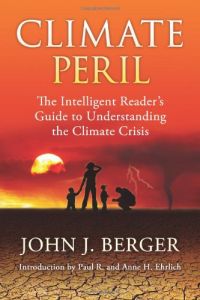Join getAbstract to access the summary!

Join getAbstract to access the summary!
John J. Berger
Climate Peril
The Intelligent Reader’s Guide to Understanding the Climate Crisis
Northbrae Books, 2014
What's inside?
An intricate, exhaustively researched overview of current climate science offering new predictions for Earth’s future.
Recommendation
Reflecting the overwhelming scientific consensus – if erring on the side of pessimism – this important overview provides a wake-up call for all citizens of Earth. Climate expert John J. Berger presents a scary but scientific view of climate change. His treatise does not indulge in earnest save-the-planet rhetoric; instead, he offers a cold, well-crafted dose of science. Berger provides readers with more than enough background to understand the scientific information he presents and to make educated decisions about climate change, although he is, based on the science, somewhat vague about timelines. From prolonged allergy seasons in the US to entire countries that could wind up under water, Berger documents and explains each prediction. Demonstrating professional due diligence, he gathers quotes, research and supporting statements from numerous sources and notable colleagues although the very technical, information-dense result isn’t easy reading or easy analysis to accept. While always politically neutral, getAbstract recommends his sobering thesis to anyone who needs to understand climate change, including investors, NGOs, policy makers and entrepreneurs.
Summary
About the Author
John J. Berger, author and editor of 11 books on climate change and related issues, has consulted for the National Academy of Sciences, the US Congress and other major organizations.
















Comment on this summary